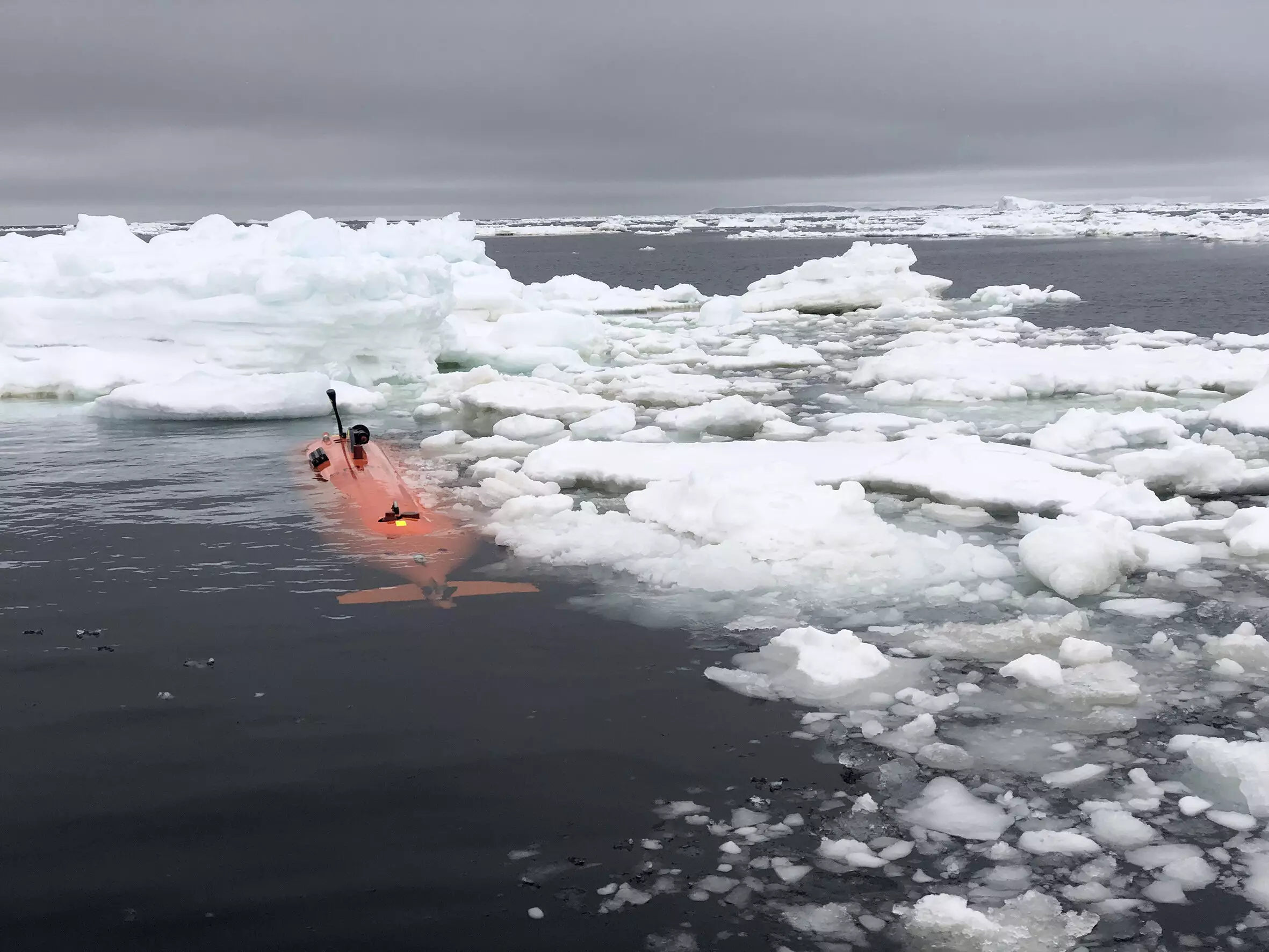In a striking demonstration of modern scientific exploration, an international team of researchers, including prominent scientists from the University of East Anglia (UEA), ventured beneath the Dotson Ice Shelf in West Antarctica. Here, they employed the unmanned submersible named “Ran,” designed to reach unprecedented depths of the ice and gather vital data regarding the dynamics of ice shelf melting. Over a dedicated span of 27 days, this remarkable underwater vehicle covered more than 1,000 kilometers, navigating through an ice shelf that measures a staggering 350 meters thick. The mission’s focal point was the exploration of the intricate cavity just beneath the glacier, revealing not only the swift patterns of melting but also the complex geological formations that may hold secrets to understanding the future of our planet’s ice.
Understanding the Ice Shelf’s Role
The Dotson Ice Shelf is more than a mere block of ice; it is a fundamental component of the West Antarctic ice sheet. As part of this crucial ecosystem, the ice shelf plays a vital role in regulating global sea levels. The melting of the Dotson Ice Shelf and its neighbor, the Thwaites Glacier, has garnered unprecedented attention from scientists worldwide, sparking critical discussions regarding their potential to influence sea level rise significantly. These ice shelves act as a barrier, slowing the flow of glaciers from land into the sea. Therefore, understanding the mechanisms leading to their melt is paramount.
The radical findings presented by the research team, published in the esteemed journal Science Advances, highlight the critical role of underwater currents in the melting process. Through the advanced technology of the submersible, the researchers captured key data regarding the currents beneath the glacier for the first time, unearthing vital insights into why certain areas of the Dotson Ice Shelf experience melting at accelerated rates.
New Insights into Ice Melting Mechanisms
This expedition unveiled some expected patterns as the researchers assessed where rapid melting occurred, particularly at vertical fractures where water flows might be concentrated. However, what was entirely unexpected was the discovery of unusual formations at the base of the glacier. The mapping revealed a mixed topography—peaks, valleys, and even structures resembling sand dunes—challenging previous perceptions of the ice’s surface as an unyielding flat expanse. The researchers posited that these features resulted from the interplay of liquid water and the natural forces at play beneath the glacier.
Lead author Anna Wåhlin, an oceanography professor at the University of Gothenburg in Sweden, compared the realization of the ice shelf’s dynamic underside to the “first sighting of the backside of the moon.” Such testimonies underscore the pioneering nature of this research and the curiosity it instills within the scientific community.
Collaborative Scientific Endeavors
The TARSAN project, pivotal to the research, integrates atmospheric and oceanic studies to investigate how these forces affect the Thwaites and Dotson Ice Shelves. Co-author Dr. Rob Hall and fellow scientists from UEA navigated the RV Nathaniel B Palmer, enabling the successful operation of the autonomous underwater vehicle. The collaborative spirit showcased by the entire team emphasizes the importance of interdisciplinary work in tackling the intricate challenges posed by climate change.
Prof. Karen Heywood, another key figure in the TARSAN project, expressed elation when the first images were captured, revealing details no one had seen before. She noted a perplexing beauty in the patterns observed, which looked almost artistic. This visualization not only challenges the conventional understanding of glaciology but also opens avenues for future investigation. The blend of art and science invites creativity into analysis, thus facilitating more engaging communication about the climate crisis.
The Future of Ice Shelf Research
As the team prepares for follow-up missions, including their intended return to Dotson Ice Shelf in January 2024, there is a palpable sense of urgency in their work. Their findings challenge fundamental assumptions about the mechanisms behind ice melting and beckon for an updated understanding of the processes at play. With the recognition that existing models are inadequate in explaining these complex melting patterns, there is a clear call for enhanced models to predict future melting and its ensuing impact.
The ocean plays a paradigmatic role in influencing glaciological changes. Scientists now face the compelling task of integrating oceanic data with satellite observations for a more comprehensive understanding of these intricate processes. Enhanced collaboration between oceanographers and glaciologists can potentially reveal answers to long-baffled questions.
The pursuit of knowledge does not come without challenges, and the loss of the submersible, Ran, under the ice during the most recent mission highlights the unpredictability of such research undertakings. Still, every finding contributes significantly to our understanding of climate change and its multifaceted impact on global geography. Each successful dive brings humanity closer to grasping the complex interplay of forces at work beneath our planet’s icy expanses.

